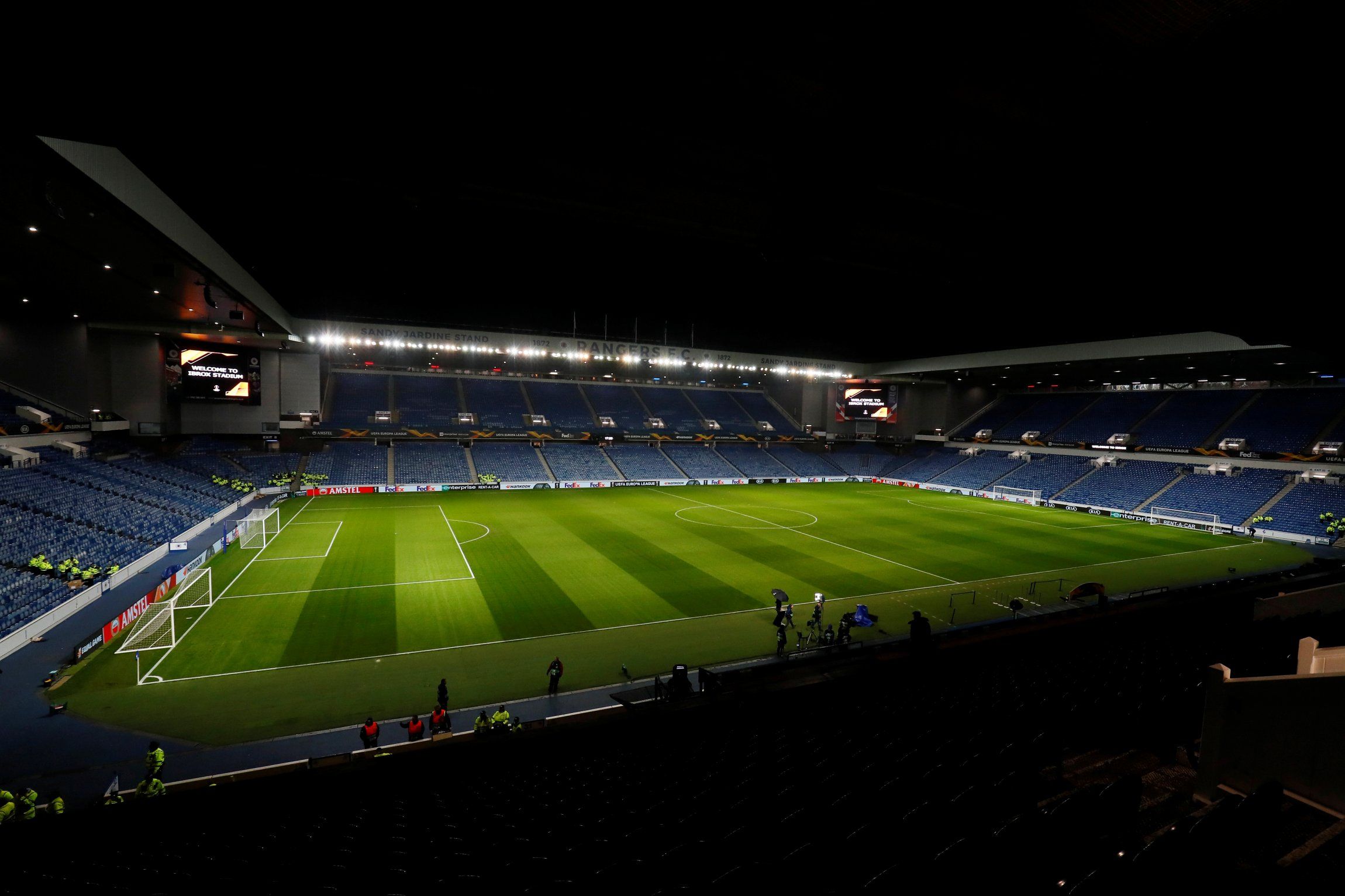Key information about Ibrox Stadium
Ibrox Stadium was built in 1899 and is now the home of Rangers FC. The ground is located on the south of the River Clyde over in Ibrox in Glasgow and is the third-largest football stadium in Scotland.
Its current maximum capacity stands at 50,817, all being seated, and it has a pitch that measures 105m by 69m. The surface is covered with natural grass, it has undersoil heating installed and no running track surrounding it.
The record attendance at Ibrox Stadium was set in 1939 when 118,567 supporters watched the derby against Celtic.
A history of Ibrox Stadium
It goes without saying that Ibrox Stadium is one of the most historic and most popular grounds not only in Scotland but also in Europe. Before actually moving into their current home, Rangers played their football over at Glasgow Green, which was followed by various public pitches after that, until finally, Ibrox Stadium, or Ibrox Park as it was known between 1899 and 1997, was opened in 1899.
The very first game Rangers ever played at their new home was a 3-1 triumph over Hearts on 30 December that same year. But Ibrox Park is a completely different ground from the current iteration of Ibrox Stadium. The initial improvements and boosts saw the capacity rise up to 75,000 and by 1902, it was ready to host its first major event with an international clash between Scotland and England.
But, disaster struck and part of the wooden terraces collapsed, causing 125 people to fall to the ground 50 feet below the terracing and killing 26 in the process. The incident led to the new rule that prohibited the use of wood terracing and clubs had to install terraces with a base of earth banking. The removal of the wooden terraces also meant the capacity was reduced by 25,000.
Following that redevelopment, the next major change was in 1928, a year that saw the erection of a new Main Stand and Ibrox Stadium would see another surge of attendances, culminating with 118,567 flocking into the ground to watch the clash against Celtic in 1939. Still, the next couple of decades brought little changes and it wouldn’t be until another disaster occurred that Ibrox Stadium was redeveloped once again.
In 1971, 66 people were killed following a crush that happened at one of the exits after the match against Celtic. This, along with the previous incidents and Ibrox Stadium’s worst fan safety record in Britain, prompted major reconstructions and the eventual conversion into an all-seater over time, starting with the North Stand.
This was followed by the erection of the three new stands: Copland Road Stand in 1978, West Stand in 1979 and a new Govan Stand in 1981. This huge project meant the stadium was largely improved and modernised in an expensive project and only the main stand remained unchanged.
Still, in the 1990s, Ibrox Park finally became Ibrox Stadium and was further refurbished in the 21st century and in recent years. Most of the changes, however, were still minor and recent redevelopments meant that both Celtic Park and Hampden Park would eclipse it in both size and modernity. There has been talk of potentially improving Rangers’ home but nothing major has been done yet.
Tickets to watch Rangers FC at Ibrox Stadium
All tickets to watch Rangers FC play at Ibrox Stadium can be found on the club’s official website. The prices will vary but an average adult ticket can be bought for around £20 to £30. Concessions and children can get their ticket for a cheaper price.
Rangers FC also offer a season ticket scheme and more information can be found on the aforementioned website.
Related links
https://www.rangers.co.uk/ - Official website of Rangers FC
https://www.rangers.talent-sport.co.uk/PagesPublic/Home/Home.aspx - Tickets to watch Rangers FC at Ibrox Stadium

